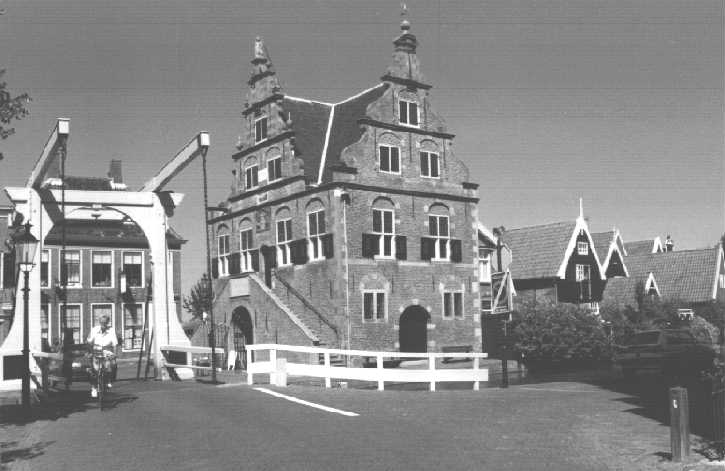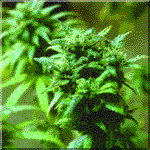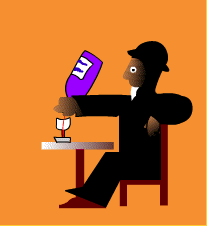Prohibitionists' Fantasies Alter Caribbean Islands
"Newest Cocaine Route to States: the Caribbean
Drugs: Colombian traffickers are bringing violence, money laundering and addiction to tourist destinations."
The Los Angeles Times, circa April 27, 1997
By Juanita Darling, Times Staff Writer
BASSETERRE, St. Kitts - With its palm trees, pastel gingerbread houses and friendly shopkeepers and hoteliers, this tropical port long has been a haven for British and U.S. tourists.
But in recent years, its Caribbean calm has been broken by a laundry list of violent events: A former U.N. ambassador disappeared and was presumed dead; police found the body of the scion of a politically powerful family stuffed in the trunk of a burned-out car; the inspector investigating the cases was killed in broad daylight.
Scotland Yard was brought in to try to solve those mysteries and ease the ensuing political crisis.
But police now believe the three men were all victims of a growing wave of violence and corruption sparked by the new presence here of Colombian drug lords.
Confronted with intensified interdiction efforts in the Bahamas and at the U.S.-Mexico border - and with the growing distrust of their Mexican allies - Colombian cartel members have pushed their drug trafficking deep into the eastern Caribbean, experts say.
About one-third of the cocaine available in the United States and one-half to two-thirds of that sold in Europe - hundreds of tons of the drug - is now shipped through the tiny islands of this region, according to U.S. and European law enforcement officials.
Traffickers in small planes and swift boats are following the necklace of islands from the Colombian coast eastward to the edge of the Caribbean and then on to the U.S. Virgin Islands and Puerto Rico, officials say. Once in U.S. territory, they can move drugs to the mainland with no fear of customs inspections.
Similarly, former and current Dutch, British and French colonies are providing the cartels with easy access to Europe.
The traffickers are inflicting on the region what Caribbean security expert Ivelaw Griffith calls the "package": They are blamed for increases in money laundering, addiction and corruption so profound that they threaten to put criminals in charge of the government and the economy.
"This is probably the best scenario a drug trafficker could invent," said Sandor Calvani, who heads the U.N. Drug Control Program's Caribbean office. "In the south, big producing countries. In the north, big consuming countries. And in between, 1,200 islands organized in 29 countries with four different [government] systems that do not communicate among themselves and [with] an infinite number of coves and small beaches."
Richard Thomas, the top British official in the region, compares the upsurge in narcotics trafficking today to the perceived threat of communism that provoked the U.S. invasion of Grenada in 1983. "In the intervening 14 years, that threat has dwindled to almost nothing, but the threat to stability is now drug trafficking," he said.
Colombian drug lords are paying those who ship their loot through the Caribbean with drugs rather than cash, creating a local supply that has increased consumption, experts say.
The Psychiatric Hospital in Barbados has been flooded with addicts from throughout the region. "We have no systematic study as to the extent of the drug problem here," said Dr. Victor Ford, "But it ain't getting no better."
The number of tourists complaining that they have been approached by drug dealers in Barbados has quadrupled over the past six months, Calvani said.
He compared the drug traffickers' strategy to the way Italian ice-cream makers got into the German and Austrian markets. "They put small shops along the route to consolidate transportation and build consumption," he said.
He added that "the other frightening observation is that instead of just wanting to influence government," the drug dealers "now . . . want to short-circuit the democratic process and actively and regularly influence electoral campaigns. It is becoming a direct challenge to the democratic process."
Indeed, Caribbean political parties now regularly accuse one another of accepting campaign contributions from traffickers. Law enforcement authorities say they believe most of the claims but cannot prove them because they lack tough election laws that would, for example, let voters see just who is bankrolling a campaign.
As for widespread political corruption, "If it can be done in Colombia, it can be done in St. Kitts," said Anthony Bryan, director of the Caribbean Studies Program at the University of Miami's North-South Center.
The U.S. State Department already has reported that there is extensive money laundering in Aruba, the island closest to Colombia. Officials also note an increase in both cocaine and heroin trafficking there. A U.N. internal document says that 75% of all arrests in Aruba are now drug-related.
Recently published Dutch intelligence reports cite "worrying indications" that Aruban democracy is being eroded by money laundering linked to the drug trade - an allegation denied by Aruba's government.
As more Caribbean countries try to develop offshore banking, the threat of drug-related money laundering will increase, law enforcement authorities warn.
European nations are so concerned about the burgeoning Caribbean drug trade that they are financing an 87-point anti-narcotics program.
The United States has offered Coast Guard and Navy vessels to help patrol the region and has negotiated agreements for U.S. planes to fly over the islands and for its law enforcement personnel to pursue suspects into their territorial waters.
Accustomed to dealing with nothing more threatening than drunken tourists or rowdy cricket fans, police in many of the small Caribbean isles are now facing drug-related crimes that could provide the fodder for Hollywood mysteries.
The day after Dole Chadee, an alleged drug lord in Trinidad and Tobago, was ordered to stand trial for murder last year, the key witness against him - who had been in a protection program for two years - was killed.
Law enforcement officials said the witness' death was just one of 30 slayings linked to the organization run by Chadee, who has been convicted of four killings.
But such convictions are a rarity, especially as drug-linked bribery and intimidation of witnesses, jurors and judges increase, experts say.
They also note that it can be difficult to bring suspects to justice because of the "island mentality" - the reality that in small Caribbean communities, the residents all know one another and distrust outsiders.
Here in St. Kitts and Nevis, shaken by the two high-profile killings and the disappearance in 1994, police frustration is especially high. Officers have formally charged half a dozen individuals in the killings but have watched as the cases collapsed in bizarre judicial circumstances.
"We have known who committed the murders for the past two years," asserted Brian Reynolds, the Scotland Yard inspector called in to clean up St. Kitts' corruption-riddled, 574-officer police force.
Police have not been able to persuade a local judge to hear a case against six suspects. The one man who was put on trial - accused of killing the police inspector - was freed after two juries deadlocked.
British police have acknowledged that in the killing of the man found in the car trunk - the deputy prime minister's son - they were not able to gather evidence as thoroughly as they would have back home.
The car containing Vincent Morris' body - and that of his girlfriend, Joan Walsh - was found hidden in a field of 7-foot-tall sugar cane. Police normally would have waited to move the bodies until a pathologist arrived from London the next day to examine the scene. But several hundred islanders were threatening to burn the cane field, forcing authorities to move the car immediately, possibly destroying valuable evidence.
Apparently, the crowd had moved upon the field because the suspects in the pair's killing had been arrested - and several of them are popular figures in Basseterre, the capital.
Authorities identified them as:
Noel Heath. He is known as "Zamba," or "Big Dread" for his dreadlocks and full beard. He is a farmer who lives in town and gives away produce to the needy in his working-class neighborhood.
Glenn Roy Matthew. He is a respected businessman, the local agent for Amerijet, an air freight company.
Clifford Henry. He left St. Kitts as a young man but returned at the beginning of this decade to live in his mother's modest home. He was building a two-story Georgian house overlooking the bay at the time he was arrested.
Charles Miller. He is known as "Little Nut." He was a troubled teen who made good, in the eyes of many Kittsians. Five years ago, Miller bought a bankrupt trading company and a house nearby with an ocean view.
Miller was seen regularly with William Herbert, the former U.S. and U.N. ambassador who was an island power broker and who disappeared on a June 1994 boating trip.
Morris' brother, Dean, later testified in another case that Miller, Henry and Matthew were suspects in his brother's death because Morris had stolen cocaine from them.
But police never got a chance to lay out their theories and evidence in Morris' killing because the prosecutor in the case, who could not be reached for comment, didn't show up for the trial. Opposition newspapers claim he was corrupted, and other observers suspect he may have been intimidated.
In the end, the suspects were released.
But Heath, Miller and Matthew - their lawyer could not be reached for comment either - were rearrested last year at the request of U.S. authorities who wanted them extradited to face drug-trafficking charges in Miami.
After their arrests, flyers and graffiti appeared all over town denouncing U.S. imperialism.
Police here were frustrated when a magistrate refused to extradite the men. That frustration deepened in February when a U.S. jury, hearing the same evidence presented to the magistrate, sent Henry - who had fled to Miami and was arrested there - to prison for life.
"The morale of the officers," whose take-home pay starts at about $470 a month, has been "affected a lot" by the tumult caused by this case, Reynolds said.
As for the government, it cannot do anything about the homicide cases, because "as in your country, the judiciary here is independent," noted Prime Minister Denzil Douglas. He also insisted that St. Kitts and Nevis is doing all it can to combat drugs - fully cooperating with U.S. authorities and tightening money-laundering laws.
Still, its mixed counter-narcotics results show the uphill battle the small countries of the eastern Caribbean face, diplomats and law enforcement experts agree.
"This is not the Gulf War," expert Calvani said, referring to the U.S.-led alliance's quick defeat of Iraq in 1991. "It is not something that we are going to win next year or in the next five years. . . . Now is the time when significant decisions of strategy will affect what will be the result in the next five to 10 years."
[End]

Comments, questions and suggestions. 
Reporters and researchers are welcome at the world's largest online library of drug-policy information, sponsored by the Drug Reform Coordination Network at http://www.druglibrary.org/
 to the 1997 News page.
to the 1997 News page.
This URL: http://www.pdxnorml.org/050197.html

 Multnomah County Circuit Judge John A. Wittmayer ruled April 24 that exclusion orders issued by police to drug sellers on certain Portland city streets violated the double jeopardy clause in the state and federal constitutions. Surprisingly, Portland city officials seem to be backing into a harm-reduction solution. As reported in "City reviews ways it fights drugs," in The Oregonian of May 3, 1997, officials say that to control open-air drug markets downtown, they are considering keeping the 90-day exclusions and dropping arrests for first-time offenders. The complete text is posted at http://www.pdxnorml.org/O_City_reviews_050397.html.
Multnomah County Circuit Judge John A. Wittmayer ruled April 24 that exclusion orders issued by police to drug sellers on certain Portland city streets violated the double jeopardy clause in the state and federal constitutions. Surprisingly, Portland city officials seem to be backing into a harm-reduction solution. As reported in "City reviews ways it fights drugs," in The Oregonian of May 3, 1997, officials say that to control open-air drug markets downtown, they are considering keeping the 90-day exclusions and dropping arrests for first-time offenders. The complete text is posted at http://www.pdxnorml.org/O_City_reviews_050397.html.


 Portland NORML Director T.D. Miller was served with a search warrant by Portland's Marijuana Task Force Monday night, April 28. They found 16 plants and 32 clones. The cops also took T.D.'s computer, monitor and a bunch of NORML papers.
Portland NORML Director T.D. Miller was served with a search warrant by Portland's Marijuana Task Force Monday night, April 28. They found 16 plants and 32 clones. The cops also took T.D.'s computer, monitor and a bunch of NORML papers.






 to the 1997 News page.
to the 1997 News page.